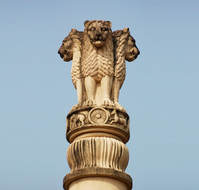Primary Sources
are items that were created or used in the period under study. They are direct sources of information that tell us about people, places, and events. Primary sources can include eyewitness accounts, diaries, letters, photographs, official documents, clothing, tools, furniture, artwork, buildings, and contents of museums and historic sites. They reveal the true story, and interpreting the information you get from them is up to you.
For this assignment, you will select three primary sources to study:
- Part 1: One UNESCO heritage site (cultural)
- Part 2: One artifact from The British Museum Collection (see assignment sheet for alternatives, if needed)
- Part 3: Your choice of another UNESCO heritage site, or artifact from The British Museum Collection
PART 1
UNESCO heritage sites are selected by a United Nations Education, Scientific, and Cultural Organization, and are deemed to be of significant universal value. The cultural heritage sites often represent a masterpiece of human creative genius and cultural significance.
Your task: choose ONE site from the UNESCO Heritage Site List below. Be sure to select from the “Cultural” list, not the “Natural” list. Make sure that your site was created between 800-1300 CE.
- China
- India
- Indonesia
- Middle East: Iran, Saudi Arabia, Yemen, Turkey, Syria, Oman, Jordan, Egypt
- Africa: Mali*, Zimbabwe, Ethiopia, Algeria, Mauritania, Tunisia, Morocco, South Africa, Gambia
Evaluate your primary source by answering the following questions in your notes:
- What is the primary source?
- Who created it?
- When was it created? How can you tell?
- Where was it created?
- Why was it created? What was the creator’s purpose?
- So what? What conclusions about the past can you draw from this primary source?
Sample answer
- What? The Dazu Rock Carvings are five clusters of rock carving that depict themes of Buddhism, Taoism, and Confucianism, as well as scenes of ordinary life.
- Who? Not indicated. Possibly carvers from the temples and monasteries.
- When? Late 9th century to mid 12th century.
- Where? Dazu area, near Chongqing, China.
- Why? The rock carvings are a form of temple art and gives aesthetic value. They also provide insight to the history, religious beliefs, and identification of historical figures.
- So what? The carvings demonstrate the harmonious coexistence of three different religions in China, and provide information about every day life during that time period.
PART 2
The British Museum, located in London, UK, is a public institution dedicated to human history, art and culture. It houses a collection of over 4,000,000 objects, searchable through an online database.
Your task: Conduct an Advanced Search to locate an artifact from your region.
- Step 1: Go to The British Museum Explore the Collection or refer to assignment sheet for Indonesia.
- Step 2: Enter your civilization/country in the search bar.
- Step 3: To limit your search further:
- Click “Image Only”
- Limit the “Production Date” to AD 800 to AD 1300
- Limit your civilization by “Culture/period/dynasty”. Fill in the filter with specific names.
- Step 4: Click “Done” .
Once you have decided upon an artifact, evaluate your primary source by answering the following questions in your notes:
- What is the primary source?
- Who created it?
- When was it created? How can you tell?
- Where was it created?
- Why was it created? What was the creator’s purpose?
- So what? What conclusions about the past can you draw from this primary source?
PART 3
Choose 2 more primary sources for a total of 3.
- Another UNESCO heritage site, OR
- Another artifact from The British Museum Collection

